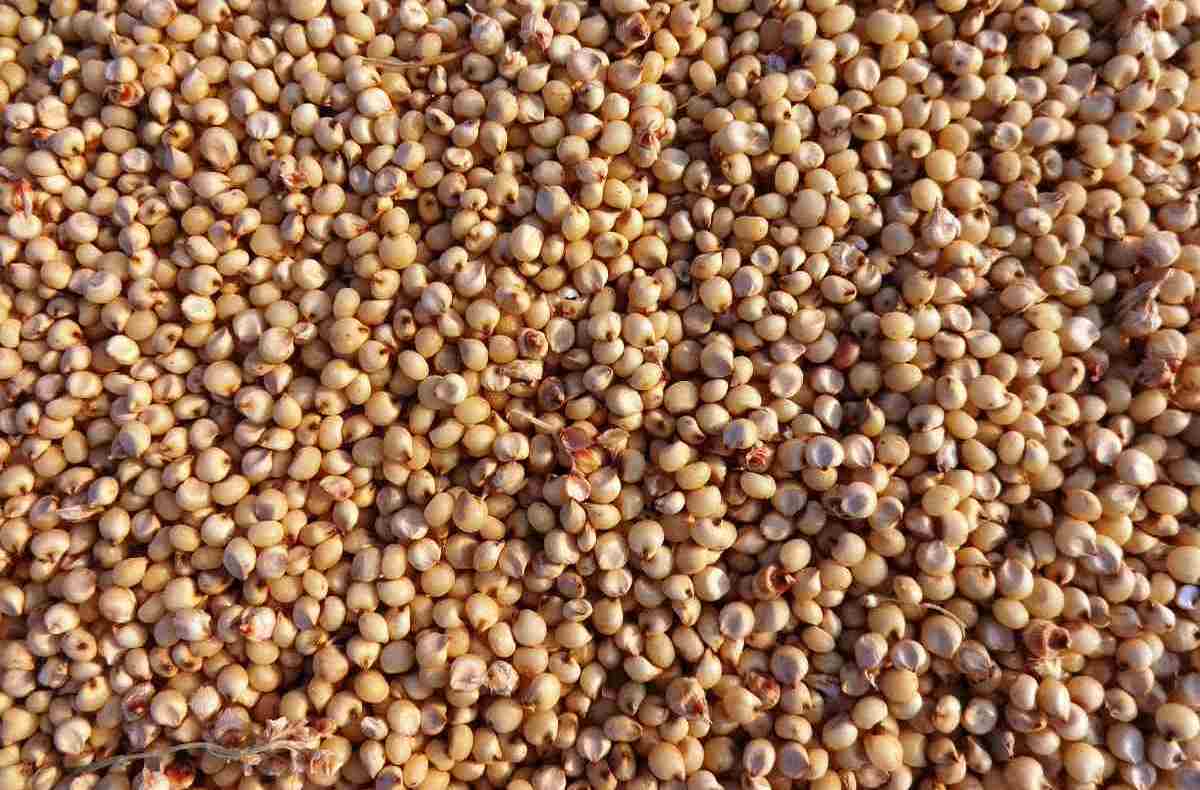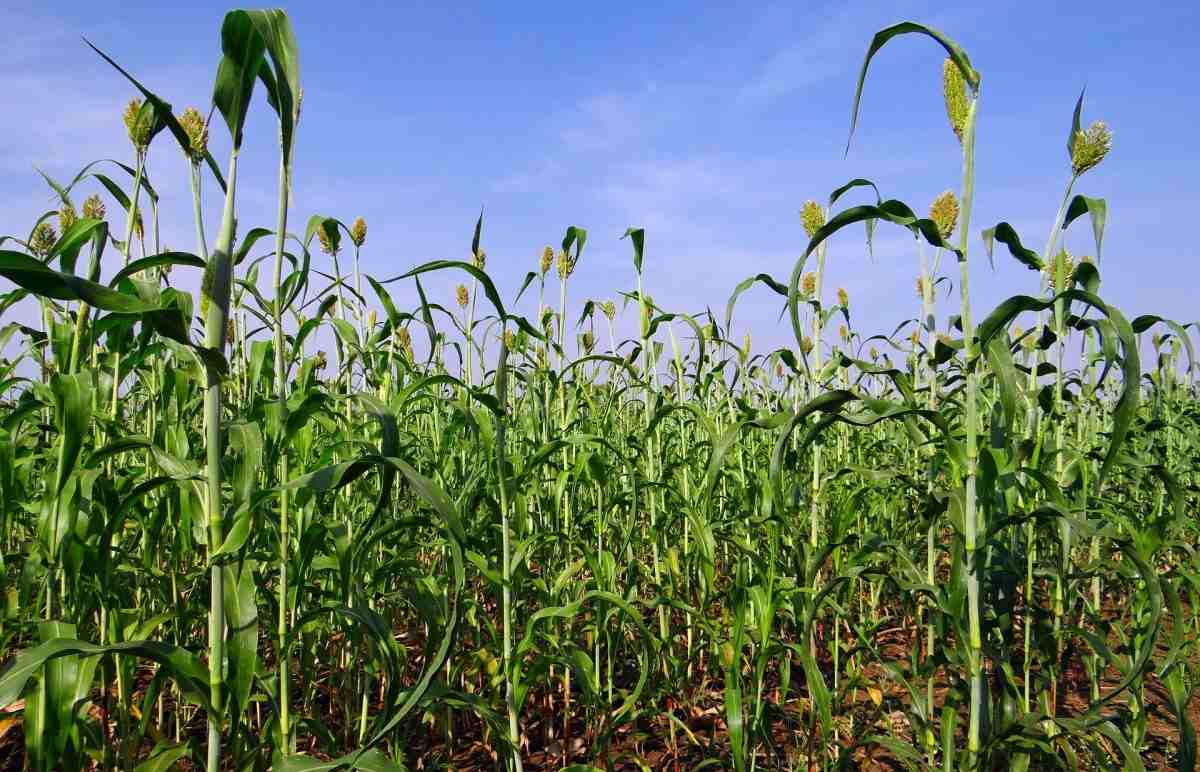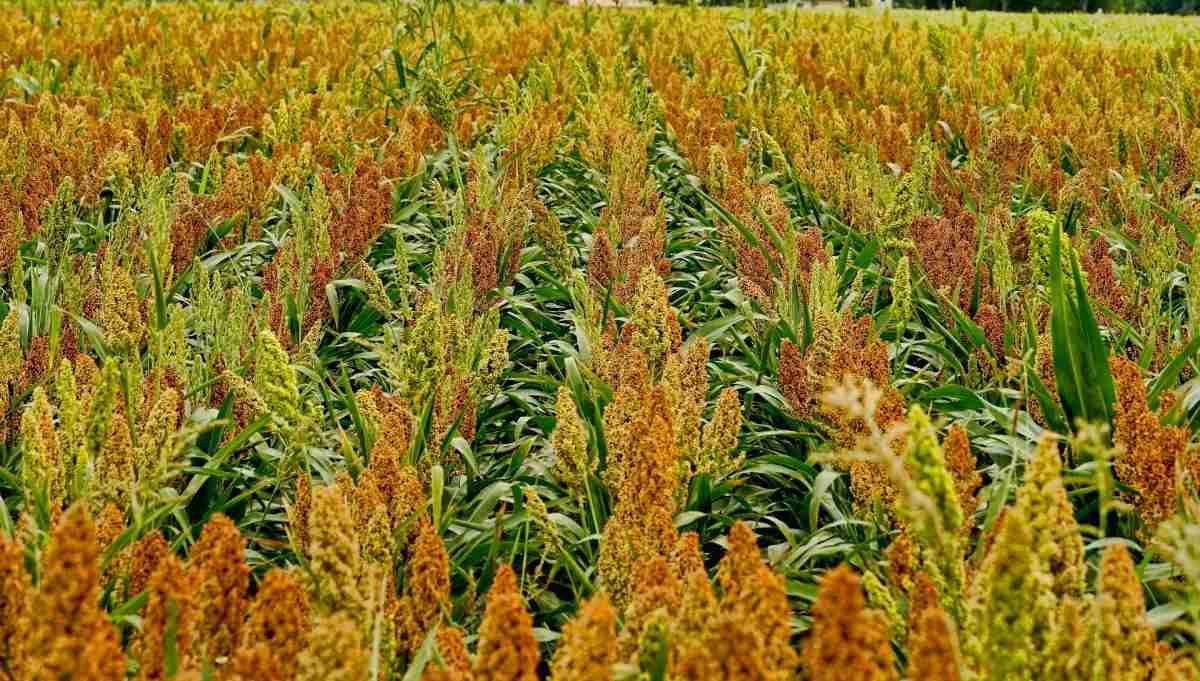Introduction to Sorghum seed germination process
Sorghum (Sorghum bicolor) is also called great millet, Jowar, Indian millet, Orshallu, cereal grain plant of the grass family Poaceae. Producers must know the crop they are cultivating to develop effective production practices. One of the most versatile members of the grass family, Sorghum can be grown for grain, crafting, or processing into Sorghum syrup. It is one of the main course cereal crops of India. Though, India is the second-largest producer of Sorghum in the world. In this article we also discussed below topics;
- How do you germinate Sorghum seeds
- Sorghum seed germination temperature
- How do you germinate Sorghum seeds
- How long does Sorghum seed take to germinate
- Process for germinating Sorghum seeds
- Sorghum seed germination period
- What is the seeding rate for grain Sorghum?
A step by step guide to Sorghum seed germination procedure

Sorghum crop is the most important food and fodder crop of dryland agriculture. The annual area under it ranges between 17 and 18 million hectares and annual production between 8 and 10 million tonnes. Sorghum grows best where summers are quite warm, with daytime temperatures regularly topping 32°C. Sandy soils in warm climates are good for growing Sorghum because it withstands drought and flooding better than corn does. It is a warm-season cereal widely grown in semiarid, sub-humid, and humid tropical and subtropical regions of the world, where minimum mean temperatures during the growing season normally stay above l8°C. Though, a substantial amount of Sorghum has been grown for centuries in other cooler highland areas. Sorghum suffers a chilling injury, where it was subjected to non-freezing temperatures below 10 to 15°C.
Types of Sorghum
Different types of Sorghum are given below;
Grain Sorghum – Grain Sorghum is also called milo, produces tall panicles covered with small, round seeds in late summer. The grain can be milled into fresh flour, and varieties such as ‘Tarahumara’ can be popped like popcorn. Cracked grain Sorghum makes good animal feed.
Sweet Sorghum – Sweet Sorghum is also called cane Sorghum, is grown for the sweet juice that is extracted from the tall stalks. The ‘Dale’ variety is produced in a range of climates, or also you can try heirloom sweet Sorghum varieties like ‘Sugar Drip’ or ‘Rox Orange.’
Broom corn – Broom corn is a type of Sorghum that holds its seeds on sturdy straws, perfect for trimming into brooms. The ornamental tops can be used in dried arrangements. Broom corn varieties vary in the color of the seeds, which can be black, red, orange, or white. The seeds are eagerly eaten by chickens and other animals, and most palatable when cracked.
Planting date or season of the Sorghum crop
Sorghum seed will germinate when the soil temperature at the seeding depth is 10°C. Faster germination and the superior establishment is obtained when the soil temperature range is 15°C for more than five consecutive days. This varies with climate and local conditions but could occur as early as March in warmer climates or May or June in cooler climates. Planting early results in slow seedling development and increases the plant’s susceptibility to disease. Sorghum can be planted in the summer, but grain yields are less than spring planting. Then, the optimum summer date to plant is late enough to avoid the heat during bloom, but early enough to avoid frost and poor fall drying conditions.
Growth requirements of Sorghum plants
The growth requirements of Sorghum plants are;
Soil requirements for Sorghum cultivation
Sorghum is grown on low potential, shallow soils with high clay content, which usually are not suitable for the production of maize. Sorghum grows poorly on sandy soils, except where a heavily textured sub-soil is present. Sorghum is more tolerant of alkaline salts than other grain crops and can be successfully cultivated on soils with a pH level between 5.5 and 8.5. It can better tolerate short periods of waterlogging compared with maize. Soils with a clay percentage of between 10 % and 30 % are optimal for Sorghum farming.
Climatic requirements
The climatic requirements for Sorghum production are divided into temperature, day length, and water needs.
The Sorghum plants distance or Sorghum seed spacing
Sorghum can be planted on beds or flat ground. Sorghum row spacing ranges from about 6 to 40 inches apart or in twin rows in a variety of configurations. For higher yields will result from plantings in 20 or 30-inch rows compared to 40-inch rows or in twin rows spaced 12 to 14 inches apart on 38 to 40-inch beds. A spacing of 40 to 45 cm between the rows and 15 to 20 cm between the plants is quite satisfactory.
Seedbed preparation and seeding date for Sorghum
A seedbed similar to the one prepared for corn is good for grain Sorghum. The use of a cultipacker or corrugated roller after seeding gives better stands. In warmer regions, reduced- and no-tillage systems are used for Sorghum.
In case if you miss this: Soil Degradation Causes, Effects, Preventive Methods.
Grain Sorghum must be planted when soil temperatures reach 15 to 18°C. Normally, this is 15 to 20 days after corn planting or between May 15 and early June. Grain Sorghum yields decrease as planting is delayed after early June. Most hybrids require 90 to 120 days to reach maturity, therefore late-planting as an emergency crop is not recommended.
The seed rate and seed treatment of Sorghum
The required plant population can be obtained by using a seed rate of 8-12 kg/ha. The seeds are sown about 3 to 4 cm deep in the furrows. The optimum seeding rate for grain Sorghum is 10 pounds of seed per acre assuming a seed size of 14,000 seeds per pound and 70 percent emergence. The seed size varies from about 13,000 to 16,000 seeds/pound depending on the hybrid. The seeding rate on a pound-per-acre basis must be decreased for smaller seed and increased for larger seed. The goal is to achieve about 100,000 plants per acre.
The seeds of Sorghum are treated with the 300 mesh Sulfur powder about 4 gm of sulfur per kg of seeds for controlling the smut disease. The Sorghum seeds are soaked in 30% salt solution (3 kg of common salt in 10 liters of water). Ergot affected Sorghum seeds which floats are removed to avoid the incidence of ergot disease.
Some of the seed treatment practices are;
- Seed hardening is done by soaking the Sorghum seeds in 2% (20 g in one liter of water) potassium dihydrogen phosphate solution for 6 hours. Use about 350 ml of solution for soaking one kg of seed.
- Dry the Sorghum seed in shade to the original moisture level.
- The Sorghum seeds of Sorghum are treated with the 300 mesh Sulfur powder about 4 gm of sulfur per kg of seeds for controlling the smut disease.
- The Sorghum seeds are soaked in 30% salt solution (3 kg of common salt in 10 liters of water). Ergot affected seeds that float are removed to avoid the incidence of ergot disease.
- Then, seeds are treated with Carbofuran to prevent shoot fly infestation.
- Treat the Sorghum seeds with three packets each of Azospirillum (600 g) and Phosphobacterium to enhance the availability of nitrogen and phosphorus.
- The seed treatment is done manually for a small number of Sorghum seeds.
Seed sowing method for Sorghum crop
Sorghum plant is grown in almost all the seasons of the year. Kharif crop must be sown soon after the first break of monsoon rains i.e. nearly in the last week of June. So, the best sowing time is in the last week of June to the first week of July depending upon the onset of monsoon. Sorghum is sown from October to November. A healthy Sorghum crop with good yields starts with the use of well-selected seeds for sowing. To get the required plant stand, healthy and good ear-heads with well-filled seeds require to be selected at the time of harvesting. Then, seed from such ear-heads is stored in a well ventilated with low moisture conditions and use certified quality seeds of hybrids varieties recommended for the area.

The seed must be treated with appropriate chemicals before planting to prevent seed-borne diseases as well as soil pests which are common in the field during the earlier years. The seeds are treated with some biofertilizers for easy and enhanced availability of important nutrients like nitrogen and phosphorus. Seed hardening is practiced for better germination.
Temperature requirement for Sorghum seed germination
Sorghum plant is a warm-weather crop, which requires high temperatures for good germination and growth. The minimum temperature for Sorghum seed germination varies from 7 to 10ºC. At a temperature of 15ºC, 80 % of seed germinate within about 10 to 12 days. The best time to plant is when there is sufficient water in the soil and the soil temperature range is 15ºC or higher at a depth of 10 cm.
Temperature plays an important role in growth and development after seed germination. A temperature range of 27 to 30ºC is required for optimum growth and development. The temperature can; however be as low as 21ºC, without a dramatic effect on growth and crop yield. Exceptionally high temperatures cause a decrease in crop yield. Flower initiation and the development of flower primordia are delayed with increased day and also night temperatures.
Plants with 4 to 6 mature leaves that are exposed to cold treatment (temperatures less than 18ºC) will form lateral shoots. Though, in plants with or beyond the eight-leaf stage, apical dominance will prevent the formation of lateral shoots. Temperatures below freezing are detrimental to Sorghum and could kill the plant. At an age of 1 to 3 weeks, plants may recover if exposed to a temperature of 5ºC below the freezing point, but at 7ºC below freezing, plants are killed. Plants older than 3 weeks are less tolerant of low temperatures and may be killed at 0ºC.
Sorghum harvesting process
You should not miss this: Moringa Seed Germination Procedure, Spacing, Yield.

The time of harvest Sorghum can be a difficult decision due to uneven maturity. Depending on the hybrid the stalks and leaves can still be green when the grain is ready for harvest. Sorghum can be harvested when the grain moisture content is about 18 percent to 23 percent. Then, harvest losses increase outside of this moisture range.
Grain cannot be stored safely over a long period above a moisture content of about 12 percent to 14 percent. Artificial drying is necessary for high moisture grain. Sorghum grain absorbs moisture from the atmosphere, and grain moisture content could change a few percentage points during the day.
Sorghum grain is brittle and easily cracked than wheat and barley grain so care must be taken in adjusting the combine.
The yield of the Sorghum crop
The yield Sorghum grain yield of improved varieties under assured water supply ranges between 25-35 quintals/ha.
Commonly asked questions about Sorghum cultivation
How long does Sorghum take to grow?
Most hybrids take about 3 to 4 months from planting to maturity.
In which season Sorghum is grown?
Sorghum crop is grown in all the seasons of the year. Kharif crop should be sown soon after the first break of monsoon rains which means nearly in the last week of June.
How many pounds of grain Sorghum do you plant per acre?
The optimum seeding rate for grain Sorghum is 10 pounds of seed per acre assuming a seed size of 14,000 seeds per pound and 70 percent emergence. Seed size may vary from about 13,000 to 16,000 seeds/pound depending on the hybrid.
Is Sorghum annual or perennial?
Sorghum crop is a member of the grass family that grows wild in tropical and subtropical regions of the world. The Sorghum plant is recognizable by its distinctive brown flower head. Sorghum is a tall plant and reaching heights up to 12 feet. Sorghum plants can be annual or perennial, depending upon the variety.
How does Sorghum pollinate?
Sorghum is mainly self-pollinated, meaning that a Sorghum plant will accept pollen from its flowers. Sorghum can accept pollen from other Sorghum plants (cross-pollination) using wind or insect transfer.
What do Sorghum plants look like?
It is a plant that looks a lot like corn but is shorter and colorful. The head grows on the top of the Sorghum plant and is white, yellow, red, or bronze. Sorghum plant is sometimes referred to as milo.
What is Sorghum called in India?
Sorghum is also called great millet, Indian millet, cereal grain plant of the grass family, and its edible starchy seeds. In India Sorghum is called jowar, Cholam, or Jonna.
The conclusion of Sorghum seed germination
When you plant grow Sorghum crop, make sure you get quality seeds for better sprouting and yield. You may also like the Radish Seed Germination, Time, Temperature, Procedure.